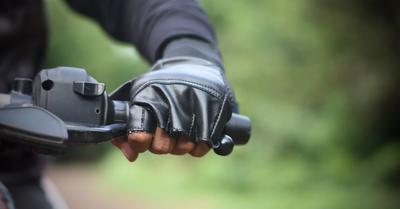How Tight Should Motorcycle Helmets Be?
There is no definitive answer to the tightness of a motorcycle helmet because it depends on the person’s head shape, size, and over preference. However, it is generally recommended that the helmet fit snugly so that it does not move around when you shake your head.
They come in a variety of shapes and sizes, so it's important to find the right one that fits snugly without being too tight. Your helmet should be comfortably snug around the wearer's head without resulting in too much pressure. If it feels too tight, you might want to try a different size or model.
A tight helmet shouldn't be worn while riding, but a loose one is just as bad. It can actually be more dangerous because it may fly off your head in an accident. But if you feel any discomfort, this means it is too tight.
A helmet should feel snug when you first put it on. Make sure to adjust the straps and tighten them until the helmet doesn't move when you shake your head.
You should not be able to twist the helmet when it is on your head. If the helmet fits correctly, it will be too snug to twist, and you will only feel your cheeks move while the helmet applies pressure to the area. This is an important safety feature that helps keep the helmet in place during an accident.
A new motorcycle helmet should be tight enough to where it doesn't shift or move as you move your head, but not so tight that it causes discomfort or pain. It's also important that the ventilation system works well or you could struggle with the heat.
The pressure from an uncomfortably tight helmet will be painful to the wearer's neck and head. If you feel any of this pain while wearing it, it is the perfect indicator that it is too tight.
How Should A Motorcycle Helmet Fit?
The helmet should fit snugly on your head and not move when you shake your head from side to side. It should also not move around when you shake your head while sitting level on your head and should not tilt forward or backward.
A good rule of thumb is that the helmet should be at least 2 inches larger than your head size. The chin strap should also be tight enough to secure the helmet in place but not so tight as to cause discomfort.
When you are looking for a new motorcycle helmet, you want to make sure that it has cheek pads that are correctly positioned to provide comfort and protection for your head. The chin strap should also be secure but not so tight that it causes discomfort or pain to your pressure points.
If the helmet is too loose, it can come off during a crash or wind gust; if it's too tight, it can be painful and uncomfortable to wear. You should always measure your head circumference to ensure the proper helmet fit.
The comfort liner in the helmet will compress over time, making it easier to wear. Be sure to check the fit of your helmet periodically, because they tend to wear down and the fit can change over time.
Do Motorcycle Helmets Loosen After Use?
Motorcycle helmets are designed to be snug. However, over time they may loosen up around your head. This is especially true if the helmet is being worn regularly for extended use.
It is important to always wear a helmet that fits properly and that has been adjusted for the best fit. They are a vital piece of safety gear for anyone who rides on two wheels. But what happens when they start to loosen up after being worn for a while?
It is estimated that after just 15 hours of use, your helmet can loosen by up to 20%. This is why trying your helmet on before and taking the proper measurements is essential to ensure it will be the right size for you.
Most helmets will loosen up over time. The best way to keep your helmet fitting correctly is by checking for clearance between your eyebrows and the front of the helmet. If there's more than one finger's width of space, then it's time for a new helmet.
How To Find The Best Fit For A Motorcycle Helmet?
There is no one-size-fits-all answer to this question, as the best way to find the best fit for your business will vary depending on the industry you are in and the products and services you offer.
However, some tips on how to find the best fit for your business include doing your research, networking with other businesses, and attending trade shows.
Helmet Size
The best way to find your helmet size is to measure the circumference of your head and match that measurement with the corresponding size on the helmet. The circumference of your head should be measured around the widest part, usually about an inch above your eyebrows.
Helmet sizing is a critical step in the process of buying a motorcycle helmet. You need to find out what your helmet size is to find the best fit for a motorcycle helmet.
After taking your measurements, you can refer to this size chart to determine what size helmet you should be looking for.
Head Shape
The shape of your head is a crucial factor when choosing a motorcycle helmet. The three shapes are round oval, intermediate oval, and long oval. It's important to know what shape you have before purchasing one because it will affect the fit and the performance of your helmet.
To figure out your head shape, you should have someone look down from the top of your head to make the determination. This will allow you to find the perfect fitting helmet so that the interior liner matches your head shape.
Helmet Interior
The interior of the helmet matters to determine fit and this includes the cushions and the type of liner it uses. The liners provide comfort and cushioning, while also helping to absorb sweat and keep your head cool.
You also want to make sure the inside of the helmet is comfortable for your head shape. The liner is designed to perfectly fit your specific head shape to ensure there is a comfortable fit with plenty of padding.
Helmet Type
There are a few different helmet types and the type you buy will impact the type of fit you experience. These helmets include full-face, modular, dual-sport, open-face, and half helmets that differ greatly in design.
The full-face helmet is the most common choice to use on a traditional motorcycle and provides the most complete fit around your head. In comparison, a half-helmet would provide the loosest fit of all the helmet types with the least protection for your head.
You should determine your style of riding and come to a conclusion about what style suits you best. After deciding on the helmet type, it becomes easier to properly match your helmet fit too.
How To Know If Your Motorcycle Helmet Fits Right
Motorcycle helmets come in a variety of sizes and shapes to accommodate different head shapes and sizes. The best way to find out which size will work for you is to try on different styles at your local motorcycle store before purchasing one online.
When trying on the helmet, you can follow a few steps that we listed below to ensure it is the proper fit. Nothing can ruin a day riding your motorcycle like a poorly fitting helmet that causes discomfort or decreased safety.
Try The Helmet On
Start by trying on the helmet. A motorcycle helmet should fit snugly around the head, without any gaps between it and your skin.
The helmet should fit snugly and be level on the head. A helmet that is too loose will not protect you well in a crash. A helmet that is too large will make it difficult for you to see and can make it hard for other people to see you.
Cushions Should Align Perfectly With Your Cheeks
Motorcycle helmets are designed to protect the head and face of the rider in a crash. It is essential that the helmet fits properly and has a snug fit so that there is no room for shifting during an accident.
The cushions in your motorcycle helmet should align perfectly with your cheeks to ensure it fits properly. This will provide a comfortable fit too. If they are too high or too low, they will not provide enough protection and it will cause discomfort.
Move The Chin Strap Around
The chin strap should also be adjusted to fit snugly. The chinstrap should be adjusted so that it touches the lower part of your earlobe. It should not be too tight to cause discomfort, but it should not be loose enough to fall off during a crash.
The chin strap serves as a benchmark for the helmet’s fit too. If you have trouble with the way it fits, it is a good indication you need a different size.
Keep The Helmet On For 15-30 Minutes
After confirming everything fits on the initial try-on, a general rule of thumb is to keep the helmet on for another 15-30 minutes. This will allow the pressure points to be tested to see if it is too tight in any areas after extended use.
If you do not notice any discomfort during this time, it is a good indication the helmet fits you properly. It is also worth noting that a helmet tends to loosen up over time, so keep this in mind while trying on your helmet.















